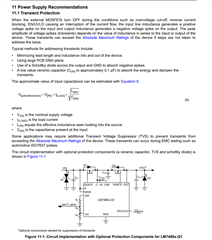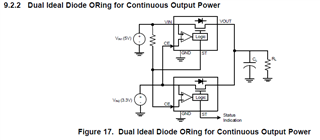Other Parts Discussed in Thread: LM74930, LM74800-Q1, TPS4811-Q1, LM7480,
Hi!
I have pretty interesting task, not sure if possible.
That is my goal for now - get weight/size estimation.
Task is to design power distribution board with power supply ORing, total weight should be less 500g.Product is VTOL (drone)
ORing should be on 2 power supplies, one is 50V60A, second is 12s battery (max52V) 300A.
350A is expected during half minute, 200A expected during 1 minute, usually 50A.
Load is inductive - ESC + motors.
I also need to measure current. I think using shunt for 350A is not best solution, better use Rdson or hall effect based sensor.
I assume the best fit is LM74930.
I found out that best MOSFETs now for 60V capable to hold up to 40A continuous in ambient (no radiator)
NVMTS0D7N06CL looks nice
I think using more mosfets in parallel will take less weight, than applying radiator.
So for 50V60A
2*Q1+2*Q2 + LM74930
For 300A
8*Q1+8*Q2 + LM74930
Back mosfets I think will help me in case of BackEMF problems from inductive loads.
What do you think? I understand, MOSFETs in parallel have higher charge and so with the same current from driver it will switch slowly, but I think for this application it is ok.
For current sense I think to use hall based sensor, and for CSP-CSN I can provide voltage output throw resistive devider.
Will this work? I didn,t see problems from internal schematics for current sense block
Ye, looks crazy, but give me honest feedback
Thanks.




